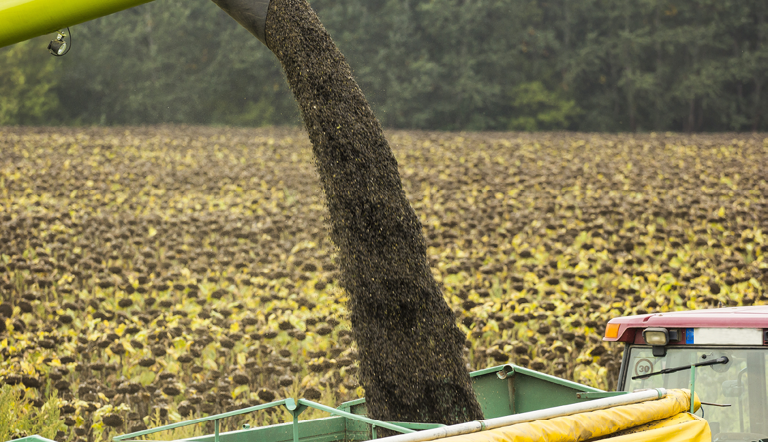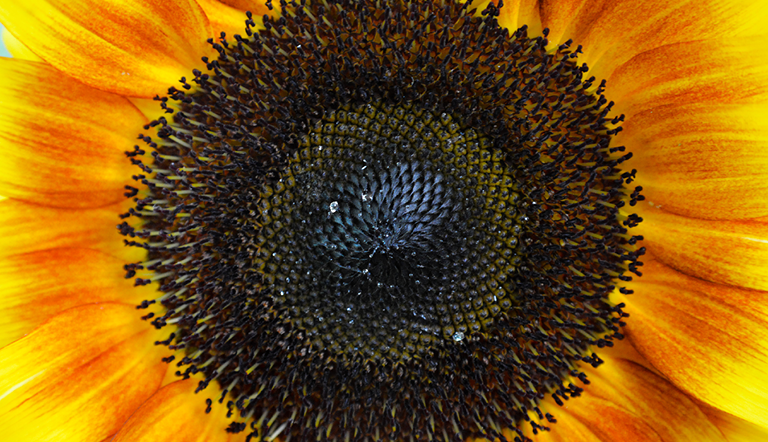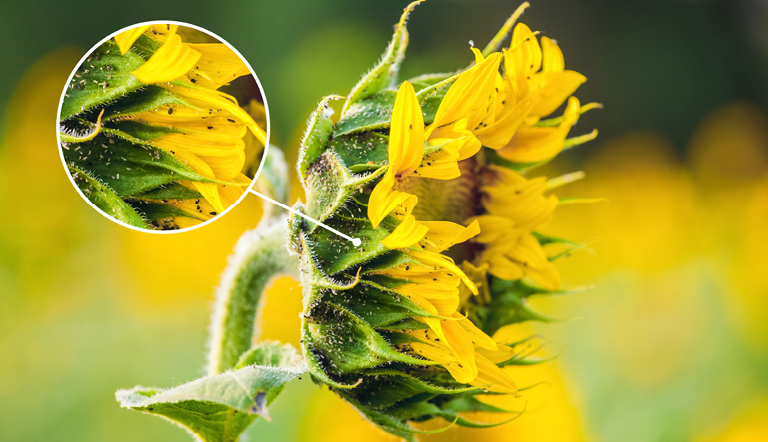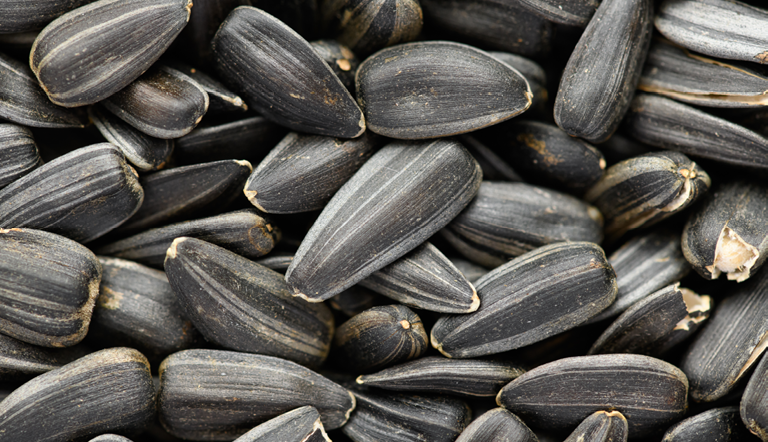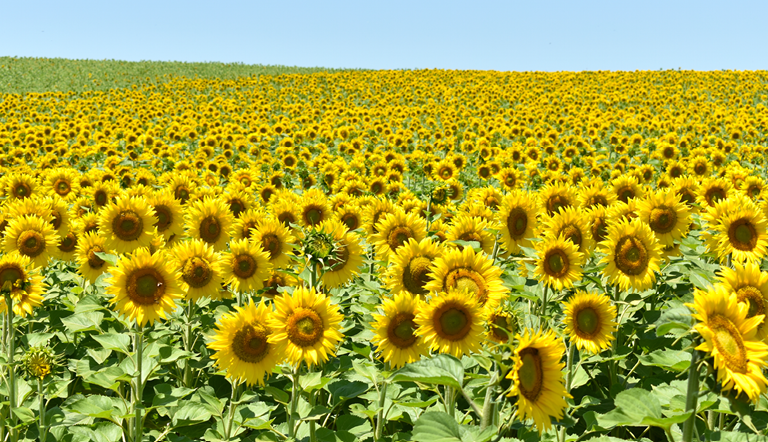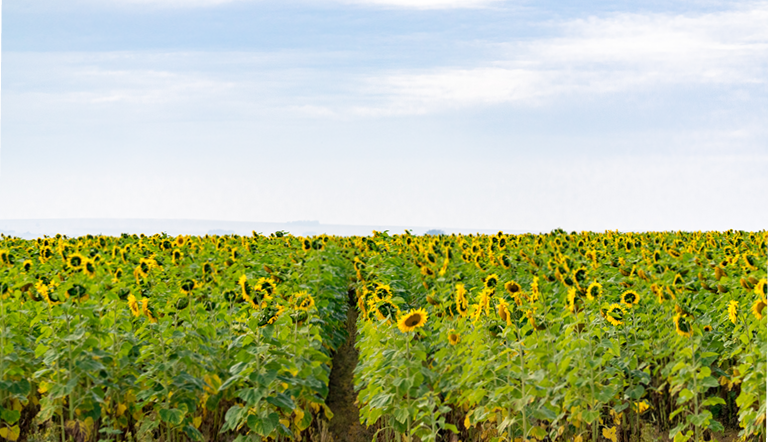
Sunflower Farming in South Africa

Sunflowers belong to the genus Helianthus (‘helios’ means sun and “anthos” means flower). Each flower head is made up of up to 2 000 individual little flowers, and the leaves are phototropic, tracking the sun.
There are almost 70 different species and while small varieties make cheerful cut flowers, the hybrid oilseed commercial cultivars can reach almost 5m in height.
The seeds are used for oil, bird seed and human consumption. Sunflower oil is used in food preparation, for biofuel, cosmetics and skin care products. The meal and cake are used for animal feed.
Production is suitable for many South African climatic conditions as the plants are drought tolerant. The deep root system and short growth period can help them to perform better than other crops during dry seasons. Sunflowers are therefore a good rotation crop, offering stability and a bit of security.
Sunflower crop cultivation in South Africa
Almost 80% of South Africa’s sunflower production is concentrated in the North West and Free State provinces. Soils should be sandy loam, with a clay percentage of less than 20%. Farmers plant sunflower seeds between November and January, while harvesting happens between late April and mid-May.
Between 2009 and 2021, the average area under sunflower cultivation in South Africa was 552 000 ha, with a mean production of 715 000t/year over this period.
According to Dr André van der Vyver, of the South African Cereals and Oilseeds Traders’ Association, hectares under sunflowers have reduced over the past few years due to a decline in profitability compared with other commodities: “The increase in maize yields far exceeds that of sunflower seed, which has remained nearly static,” he says.
“This is unfortunate, as [this] is an especially important commodity given its drought tolerance and higher tolerance for cold towards the end of the growing season. It’s also used in rotation with other commodities.”
It is essential that growers choose the correct varieties of sunflowers for their lands (see below). In making this decision, the ARC-Grain Crops Institute advises growers to consider “not just the yield, but also yield stability, yield potential and yield probability according to a realistic yield potential for each field. The stability of a cultivar is determined by the closer the R2 value is to 1 and the smaller the F probability is (preferably < 0,1)”.
Once the right cultivar has been chosen, fields need to be prepared for planting. This involves ploughing and harrowing as well as applying fertilisers according to scientific soil analysis. Ideally, half of the nitrogen requirement should be applied during planting and the other half 30–40 days after emergence.
A pre-emergence herbicide, like ADAMA’s Alanex 384 EC, is important to ensure the seedbed is free of weeds – good weed control is essential for the first 45 days. Some hybrids also allow for a post-emergence application.
Once the field has been prepared, growers can begin to plant. They will need to choose a date that is appropriate for their region but, according to the ARC-Grain Crops Institute (ARC), planting should not be left to January or February – “planting from November up to mid-December will benefit yield significantly”.
It is important to plant the seeds at the correct depth and to space them evenly. ARC advises that in most cases, “sandy soils that tend to dry out quicker will necessitate deeper planting depth. Avoid poorly drained soils, as well as highly acidic soils… It is essential to run a millipede rotary harrow (duisendpoot) over your newly planted crop three to four days after planting, because a hard crust also causes a poor stand.” The optimal plant density per hectare is 35 000–42 000 plants with a row width of 0,91cm, they add.
Fields should be monitored for problems such as weeds, insects and diseases. If problems are found, corrective action should be taken to prevent them from damaging the crop.
Once the flowers reach maturity, farmers will need to harvest sunflower seeds and the seeds will need to be cleaned and processed. This often involves removing the hulls and then crushing the seeds to extract the oil.
Varieties of sunflowers planted in South Africa
According to the Department of Agriculture and Rural Development’s Sunflower Production: A Concise Guide, “Choosing the right cultivars is one way of ensuring higher profits at no extra cost… yield and yield reliability are by far the most important criteria when cultivars are evaluated”.
John Odendaal, national marketing manager at Pannar Seed, believes “the future of the sunflower industry lies in higher-yield cultivars and those with a high oil content” and that breeding companies must increasingly focus their efforts on breeding hybrids with a higher oil content. “Profitability will then be judged under different criteria, and sunflower will be weighed up against soya bean instead of maize.”
Sunflower pests and diseases
Challenges facing growers include damage caused by insects and birds, weed control and diseases such as brown rust, Sclerotinia head rot, bacterial head rot and Alternaria leaf blight.
Senior Economist at Grain SA Corné Louw has noted that Sclerotinia played a significant role in the decline in sunflower plantings, and that the disease has now reached production regions where it was previously unknown.
However, the percentage of samples that contained sclerotia in the 2020/21 season decreased to 22%, from 71% and 51% in the previous two seasons. And the Southern African Grain Laboratory reported that “None of the samples received exceeded the maximum permissible deviation of 4%. The national average of 0.06% is the lowest since the 2015/16 season. Last season’s average was 0.55%.”
ADAMA products for crop protection
ADAMA offers a number of herbicides registered for pre-emergent weed control and post-emergence (depending on the variety of sunflower planted), as well as a fungicide for the control of powdery mildew in sunflower fields. Find more information view our crop protection solutions.
South Africa's imports and exports of sunflowers
The United Nations says that Ukraine and Russia, the world’s top producers and exporters of sunflower seed and oil, together account for over 50 percent of world production. According to Earth Daily Agro, the war in Ukraine will “most likely disrupt not only the [2022] season’s production but also the supply chain due to lack of access to sea ports.”
Grain SA notes that demand for sunflower exports is minimal but that “over the past five years, sunflower imports have decreased significantly and this can be attributed to the increased crushing capacity locally and the use of locally produced sunflower. During years of lower sunflower production, the activities at crushing plants are reduced and the refineries import more crude oil, as it is more cost-effective than importing sunflower seeds.”
In the 2020/21 season, the area farmed had decreased to 477 800 ha, the lowest since the 2011/12 season. The national yield average decreased by 10% to 1.42 t/ha from 1.58 t/ha the previous season, and the final commercial sunflower crop figure for the 2020/21 season was 678 000 tons.
However, the following season saw a turnaround, however, and in June 2022, the National Agricultural Marketing Council projected that South Africa would produce its second-largest harvest of sunflower seed. Between March and September 2022, deliveries from farms reached 832 348 tons, and 134 tons of seed were exported.
Forecasts by The Bureau for Food and Agricultural Policy (BFAP) Baseline, Agricultural Outlook 2021 – 2030, suggest that sunflower yields will improve by almost 30%, due to improvements in farming practices and high-oil cultivars. This improvement will be sufficient to supply the growth in domestic demand.
